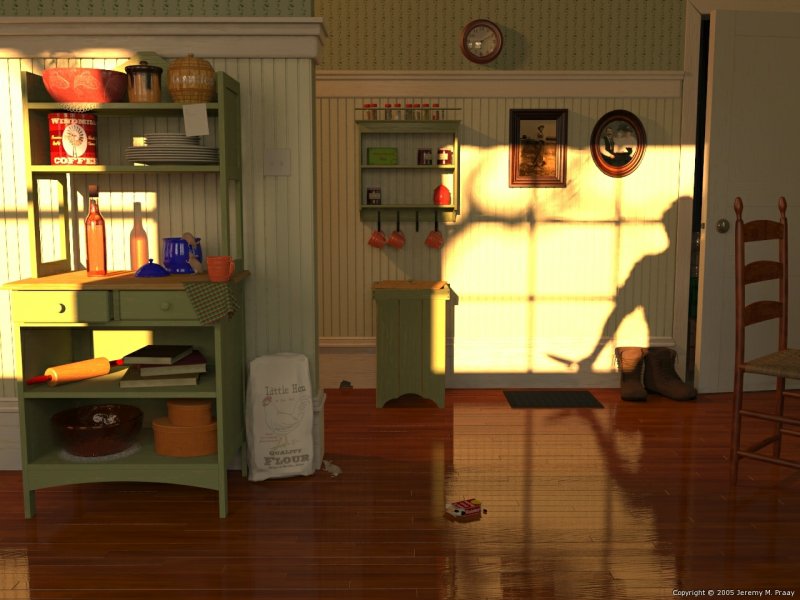Most of the elements in this scene are hand-coded CSG (Constructive Solid Geometry), with only a few exceptions:
The mice are a third-party Poser(TM) model.
The tea-box, boots, and the bag of flour were modelled in Wings 3D.
The red/green cloth, and the top doily, both on the hutch surface, were modelled and draped in Poser's cloth simulation.
The doilies are heightfields and meshes.
This scene uses Christoph Hormann's IsoWood include file quite a bit. The hutch, trash-bin, wall-shelf, hardwood floor, wall panels, door, base-boards, and cornice are all isosurface objects created using the IsoWood macros.
The light sources (there are two) both use LightSysIV by Jaime Vives Piqueres. This adds a great deal of realism to the light-sources themselves and the way that they interact with other objects.
Because I enjoy creating models using POV-Ray's CSG capabilities, creating so many of the objects using CSG, was not only important to me, but was also quite fun. The glass objects (except the dark glass bowl) were all created with lathes, as were the cannisters and the cups, though the handles are sphere-sweeps.
Most of the surface textures are procedural POV-Ray textures. Exceptions are objects such as the coffee-can, and bag of flour, which use UV-mapped textures created from scratch using the open-source program The Gimp (Windows version). With the exception of the old photographs and the doilies, there are no photo-based image-maps present.
The shadow of the farmer's wife is actually my shadow. It was created from a photograph, but only the silhouette portion was used in the scene, simply to cast the shadow on the wall.
The red bowl with the fish relief pattern and the cookie jar were both created by using an image-map (the fish / "cookies") as an iso-surface pigment, and mapping it onto the surface of a sphere, which was then differenced to create the bowl. The chair is a combination of lathes, cylinders, and sphere-sweeps including the seat tape.




